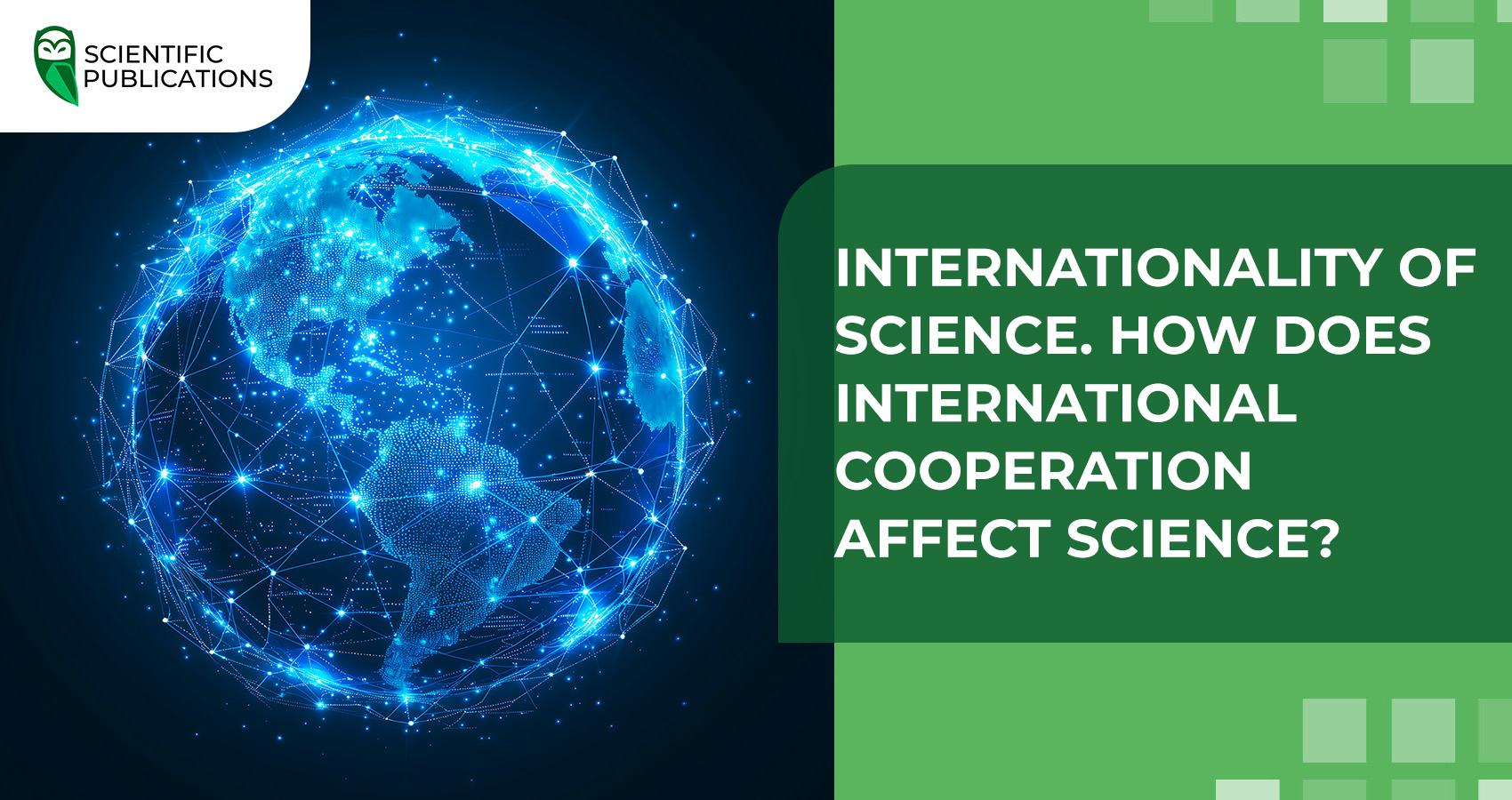Science is inherently international. Researchers and scientific institutions collaborate across borders, and a large proportion of scientific publications have co-authors from different countries. International cooperation stimulates the generation of innovative solutions, accelerates research processes and contributes to solving global challenges, from climate change to disease control. The joint efforts of scientists from around the world make science more open and effective.

The role of international scientific cooperation in the country's development
Although science and technological innovation are important drivers of national economic development and there is fierce competition between countries, international cooperation is essential to address global challenges. Balancing competition and cooperation is a long-term policy challenge, especially for countries and institutions with limited scientific resources and capabilities, which are often the most affected by global crises.
International scientific cooperation is one of the most effective forms of economic ties, as it promotes joint activities in science, trade and technology, which are enshrined in international economic agreements. In addition, such cooperation opens up opportunities to enter new economic markets and technological spaces. At the same time, the role of the state in this process is key, as international cooperation is part of the state innovation policy.
The goal of international scientific cooperation
The purpose of international cooperation is to introduce innovative technologies, increase the country's competitiveness and establish links with progressive countries. To achieve this, Kyrgyzstan needs to create joint research projects and actively maintain international relations.
Coordinated activities of national and foreign scientists will contribute to the development of global ties. Forms of cooperation such as internships, scientific conferences, publications and joint projects will help to expand international ties and introduce innovations.
Despite the great potential, in some countries scientific achievements are not always realised due to unfavourable conditions, such as rising prices for materials, imperfect legislation and financial difficulties. For economic growth, it is important to develop scientific and technological progress that enables innovation and cooperation with other countries.
Open science aims to make scientific results more accessible, which fosters innovation, strengthens trust in science, and effectively addresses global challenges. International scientific cooperation plays an important role in the implementation of the open science policy, especially in addressing international crises.
Examples of successful international scientific cooperation
1. How CERN technologies established the authorship of Raphael.
Founded in 1954, CERN has become an example of successful international cooperation in science and science diplomacy, developing peaceful technologies to solve global problems. One of the oldest mysteries in art is whether the Madonna and Child is by Raphael. The painting changed hands many times, was robbed by Napoleon and disappeared into a private collection. In 2020, a robotic scanner using a particle detector developed at CERN, the European Organisation for Nuclear Research, confirmed that the brushstrokes on the canvas were indeed those of Raphael. This discovery is part of CERN's scientific achievements.
2. Global soil map: International cooperation in the 1960s.
In the 1960s, which became the United Nations Development Decade, soil erosion became a serious problem similar to global warming today. Effective soil management required a global map, but at the time there was no single international soil classification. Many countries had their own or regional classification systems, which made international scientific communication difficult.
The Global Soil Map project began in 1961 with the support of UNESCO and the Food and Agriculture Organisation of the United Nations (FAO). This large-scale project, which lasted twenty years, was the result of a worldwide collaboration of soil scientists who developed a new international classification system. This map, now available digitally, is the first global overview of soil resources and demonstrates the importance of international scientific collaboration.
3. Global collaboration and research transparency have transformed the fight against COVID-19.
Humanity is facing challenges that cannot be solved alone. The COVID-19 pandemic has highlighted the importance of global scientific collaboration, demonstrating how quickly vaccines have been developed through international cooperation. World leaders recognise that effective scientific cooperation is needed to tackle global threats such as biodiversity loss, pollution, poverty and new technologies, including artificial intelligence.
Science needs to be more transparent and accessible. Currently, almost 70% of scientific publications have paid or restricted access, but during the medical crisis, this share dropped to 30% for publications on COVID-19. This indicates that there is an opportunity for greater data sharing to accelerate research. Global scientific cooperation, as the experience of decoding the coronavirus genome in 3 days shows, is a powerful incentive for progress.
As you can see from the examples above, and this is not all of them, without international cooperation in science, many important discoveries might never have taken place, and some problems might have taken many years to solve. Instead, the joint work of scientists from different countries has made it possible to achieve success in various fields much faster.
If you need to publish a scientific article in such international databases as Scopus and Web of Science, please contact "Scientific Publications". We guarantee your publication, and our highly qualified specialists will accompany you at every stage until successful publication and indexing. Let's develop and popularise science together!





